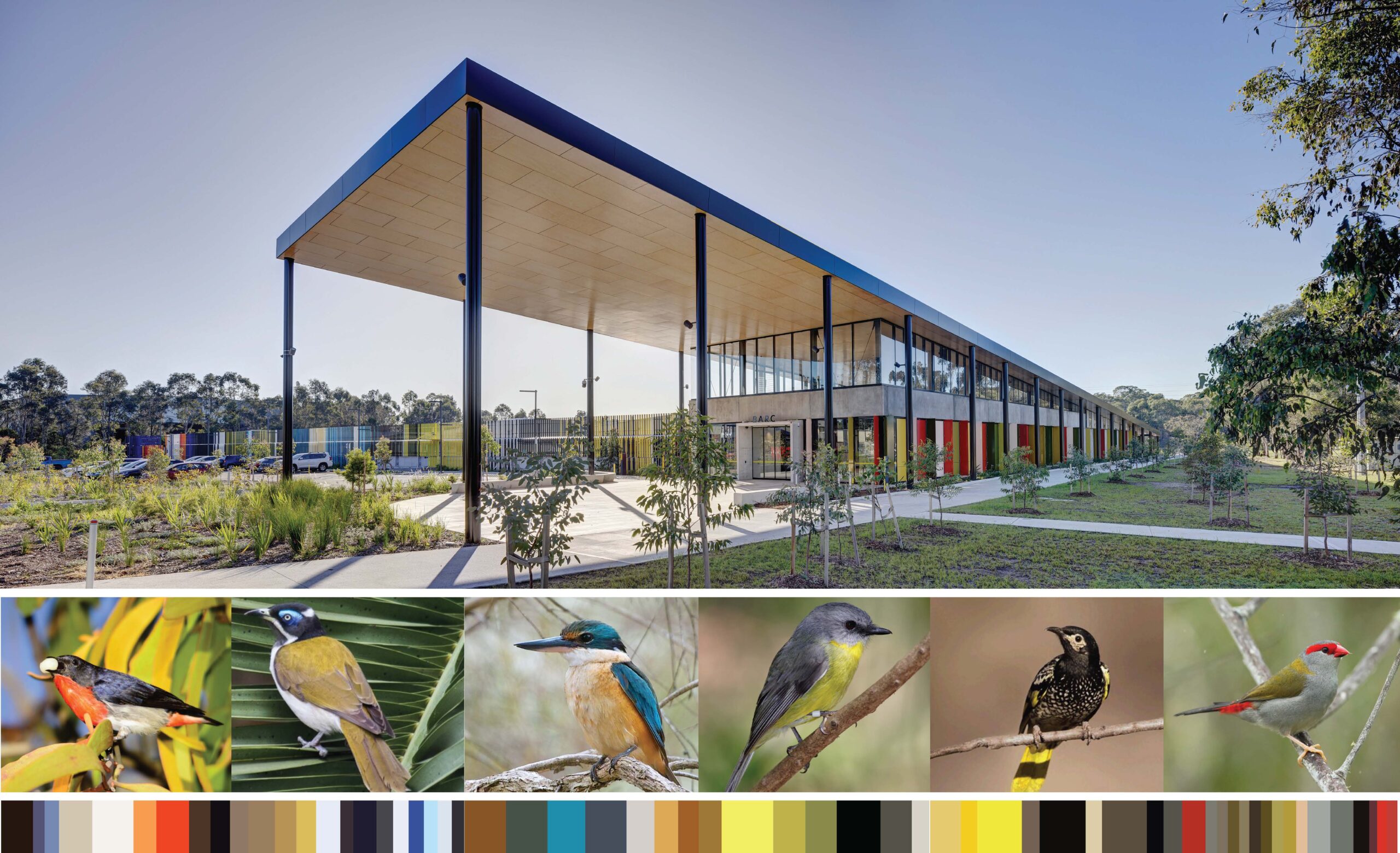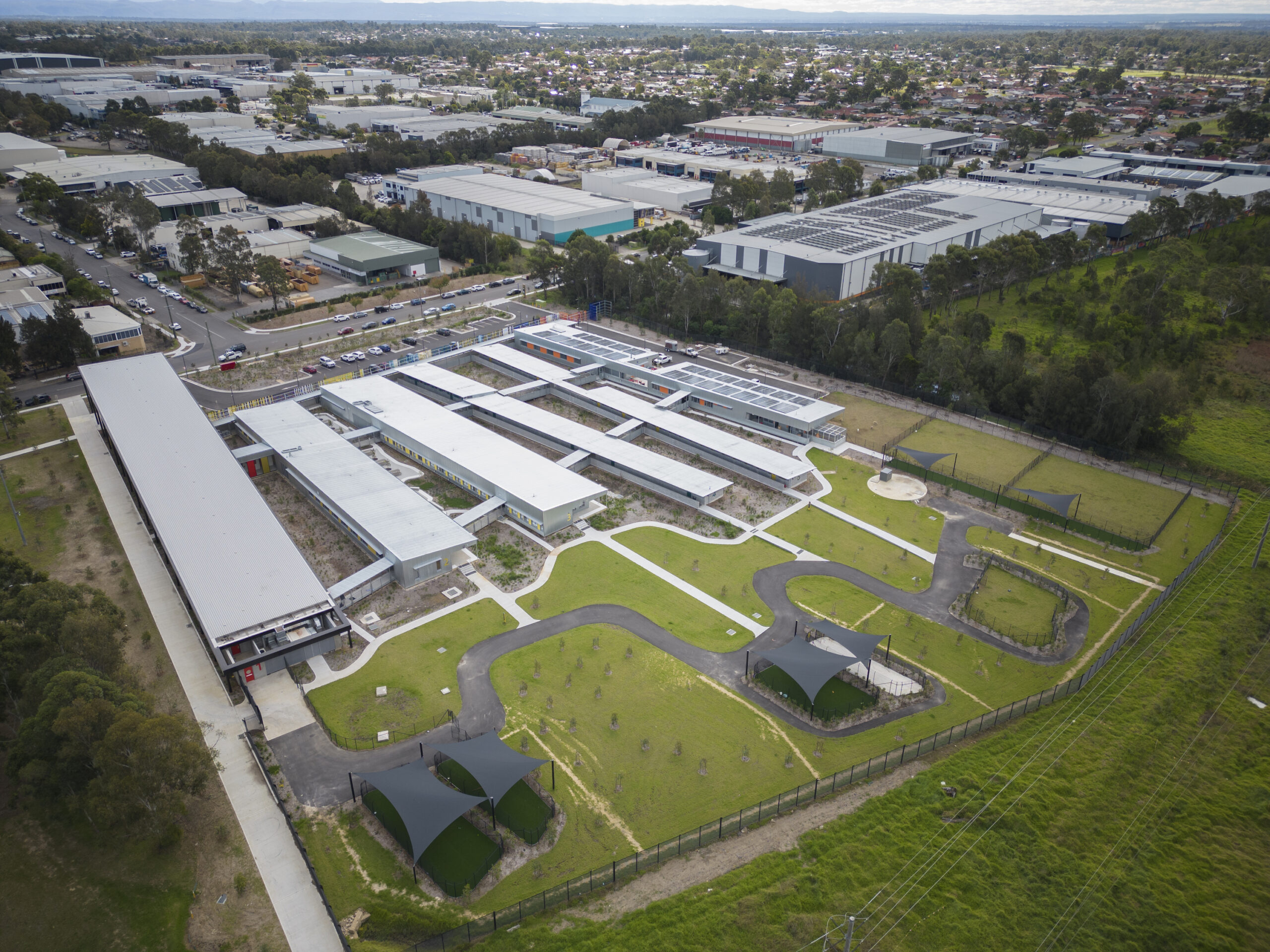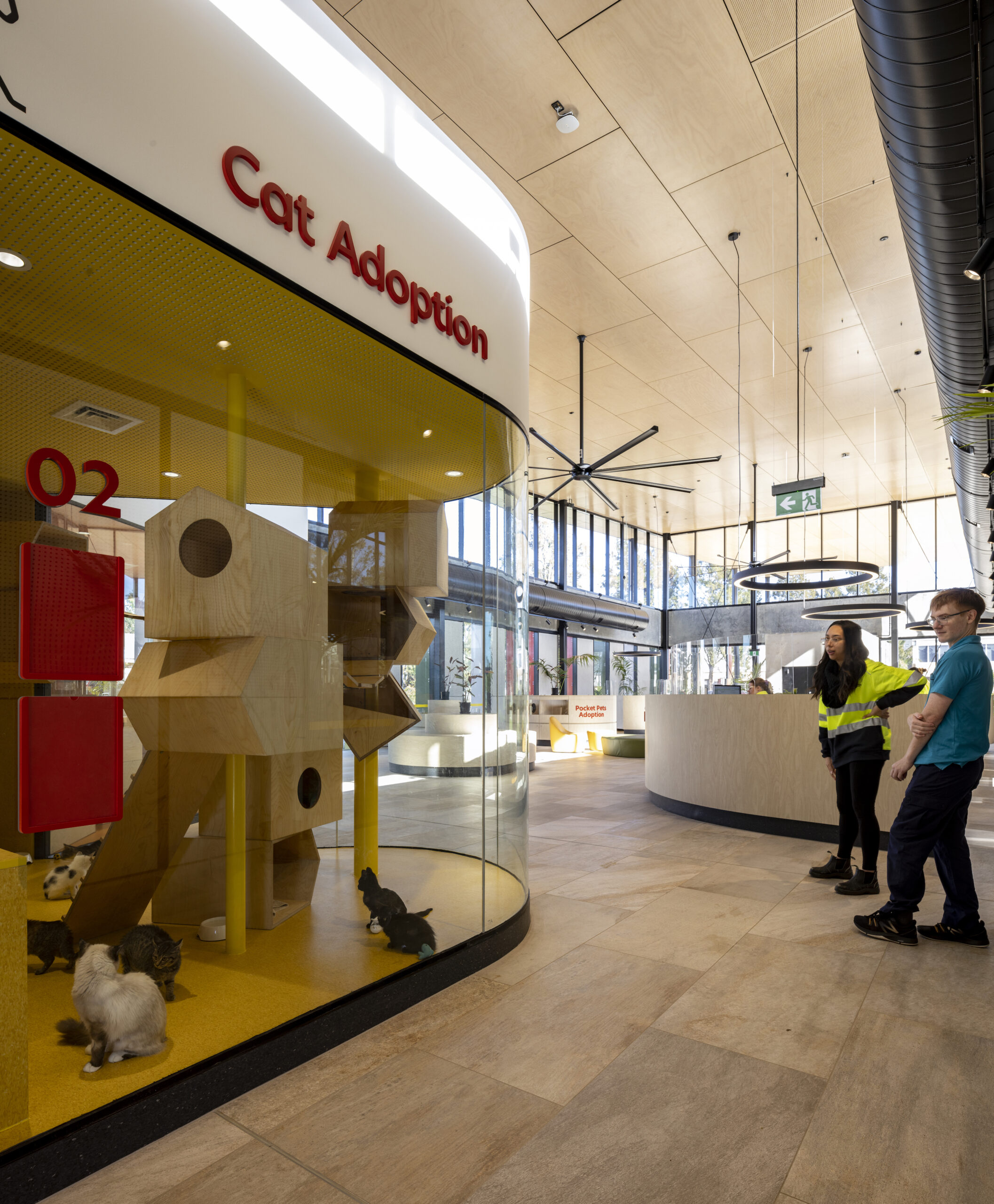- 26 August 2024
- 562 defa okundu.
Blacktown Animal Rehoming Centre (BARC)
A new animal shelter designed by Sam Crawford Architects adjacent to Western Sydney Parklands is attracting the interest of potential pet owners.

Bold colour and a handful of six finger-like buildings connect to nature to create a safe and welcoming animal shelter that promotes pet adoption.

Blacktown Animal Rehoming Centre (BARC), located adjacent to the Western Sydney Parklands, was designed by Sam Crawford Architects (SCA), and is the largest building of its type in the Southern Hemisphere, housing up to 380 dogs and cats.

The buildings are linked by covered walkways allowing for different animal movement pathways – receiving, assessment, stray reclaim and surrender, adoption, and most importantly, separating dogs and cats.

The building housing individual kennels is at a domestic rural scale, where dogs are stimulated with views onto nature via large glass windows and can rest or withdraw if needed behind screens.

This layout minimises attention fatigue, acoustic discomfort and supports staff safety.

Highly durable materials withstand extreme wear and bacteria spread, whilst best practice passive thermal comfort considers climate and ventilation.

Large exercise spaces overlook the adjoining parklands.

The light-filled reception building has a large extended roof sweeping up to create an iconic, open, easy-to-find entrance.

A civic space, it provides a secure and welcoming environment, with clear directions and circulation, ‘homely’ viewing rooms for potential pets, and a function area for educational events.

Cats are housed in multicoloured rooms, with playful sleeping boxes and climbing gyms.

A building housing a veterinary hospital and cattery promotes disease control and is fitted out with the latest technology for the treatment of injuries and desexing.

“The post-covid period has seen increases in stray and surrendered animals and we are pleased to see that our design has maximised the opportunity for rehabilitation and adoption of dogs and cats, with delighted new pet owners now walking out the door every day.”

“We engaged artist and colourist Lymesmith to create a bold colour scheme, which resulted in each of the six buildings delineated by the colours of a unique ‘native bird ambassador’. In addition, the ‘Bird Screen’, a 100 metre-long, abstract artwork of brightly multicoloured vertical blades, references local birds flittering through the bush, and identifies and links the six buildings. The colours assist with way-finding, but also inject some fun, uplifting staff and visitor experiences, in a venue typology that traditionally can feel a bit cold and impersonal.”

“BARC is designed for the well-being of animals and staff. The state-of-the-art facilities are designed to improve animal health and to increase community acceptance and adoption of impounded animals. This is achieved through our design that connects animals and humans to nature.”

“It was a juggling act to balance the highly technical requirements of animal welfare, the diverse needs of cats and dogs, with the desire for a safe and welcoming building for staff and visitors. We undertook extensive international research, and our design is benchmarked against world’s best practice in animal welfare.”

“The centre is arranged into six buildings, ‘fingers’, read as elongated rural sheds, that reach out to engage with the landscape. Each building houses a different function – kennels, a cattery, vet facilities, back of house – to help improve assessment and holding efficiency. The long finger-like design allows the animals to have a direct connection to the surrounding landscape, increasing their interaction with nature and people. This layout maximises thermal, visual and aural comfort, minimising distress, assisting with rehabilitation, and providing amenity for staff.”

“Maximising the connection with nature is such an important part of the design. For the animals obviously, but also as relief for staff compassion-fatigue, and to balance the necessary hard surfaces required for hygiene and durability. It also de-institutionalises the spaces and makes them feel more welcoming.”

Sustainable features include passive thermal comfort through maximising cross ventilation, solar access, water retention, together with sustainable technologies such as a 99 kWh solar PV array, EV car chargers and heat exchange air-conditioning.

The facility sits lightly in an extensive landscaped area, with drought tolerant, shade-giving and low maintenance planting promoting habitation of the very bird species that are the subject of the integrated art.

A staff-only building is used for animal admission, waste management, bulk storage, food preparation, grooming and laundering.

Hygienic, durable, robust, low maintenance and easy-to-clean materials were chosen.

The multipurpose function area facilitates the centre’s strong community support goals by providing public education programs in animal training and pre-adoption courses for humans, aiming to maximise animal retention rates by adopters.

















